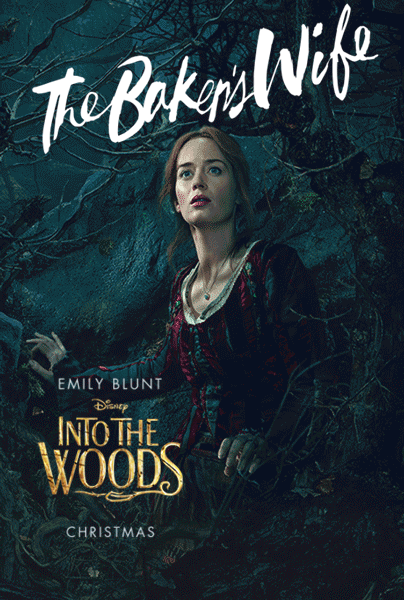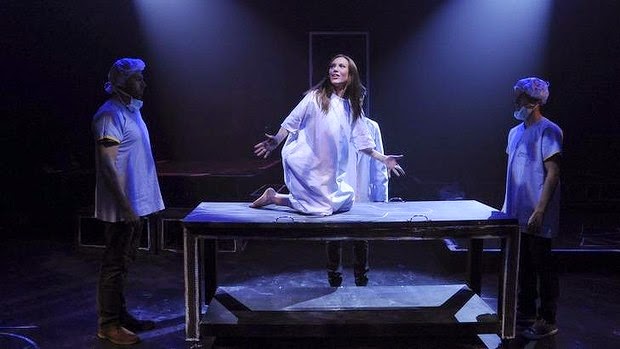 |
| Treading the boards on Pier 4 Coffee and Danish at the far end overlooking Sydney Harbour |
After Dinner by Andrew Bovell. Directed by Imara Savage; designed by Alicia Clements; lighting by Verity Hampson; composer and sound: Steve Francis. Sydney Theatre Company at Wharf 1, January 20 – March 7, 2015.
Reviewed by Frank McKone
January 24
 |
| Helen Thomson as Monika, Rebecca Massey as Dympie, Anita Hegh as Paula |
 |
| Josh McConville as Stephen, Glenn Hazeldine as Gordon |
What’s the difference between Britain’s Alan Ayckbourn and Australia’s Andrew Bovell?
I had the privilege of finding out by walking out of the Ensemble Theatre’s afternoon tea production of Absent Friends at 6.45pm, up the hill to Milsons Point train station, up even further on the stairway, not to heaven but on to the walkway across Sydney Harbour Bridge. The brilliance and beauty, in an Australian summer evening light, of the sailing boats and ferries on the great waterway far below lifted me far above the cribb’d and confin’d English suburban household with which Ayckbourn had amusingly entertained me for the previous two hours upon the stage.
Down steps into The Rocks, down hill and even further down stairs cut into the cliff face, even unto Hickson Road and Pier 4, treading the boards to the end-point, poking out into that very harbour. Time for a coffee and Danish before the bells toll for Wharf 1 and Bovell’s 8pm After Dinner, and the next 90 minutes on stage.
I laughed more after dinner time than I had for afternoon tea.
If I had had time to read Tom Healey’s four page essay in the typical STC program, I might not have expected such unconstrained laughter as erupted all around the audience as Monika (Helen Thomson) and Stephen (Josh McConville) made it off together; Paula (Anita Hegh), at last free from Dympie’s overbearing power, danced joyously alone; and Dympie (Rebecca Massey) hung on to Gordon (Glenn Hazeldine) as the band played on.
Healy quotes Bovell describing After Dinner as a “black comedy about five lonely and sexually frustrated people looking for a good time on a Friday night out and not finding it”. Healey himself writes “At first glance, one might view After Dinner as a boulevard comedy: a group of 30-something ‘singletons’ out on a Friday night looking for – variously – sex, emotional contact and/or solace, but its political subtext articulates something far more profound.”
Well, I found Bovell’s comedy (his first play) anything but ‘black’, certainly compared to Ayckbourn’s ‘bitter’ comedy (his 12th play) (see my review of Absent Friends on this blog).
Perhaps some of the difference is to do with these authors’ time in their lives of writing. Ayckbourn was born in 1939, as WWII was beginning, wrote his first play at the age of 20, and wrote Absent Friends 15 years into a successful career of humour, just after Absurd Person Singular and The Norman Conquests.
From Bovell’s own account (http://www.smh.com.au/entertainment/theatre/black-comedy-served-up-after-dinner-20150106-12iarf.html) and that of his wife, Eugenia Fragos, in an interview published in the program, the first version of what became After Dinner was written in 1984 when Bovell was 21, and the completed play was first produced at Melbourne’s La Mama in 1988. While Ayckbourn was writing well into a career as a comedy writer, Tom Healey describes Bovell’s “political voice, this passionate view about the role of art” as “a hallmark of Bovell’s writing”.
Think of Holy Day or The Secret River and you know Bovell’s plays are in a different world from The Norman Conquests or Absent Friends.
But the funny thing was I laughed more at After Dinner. How could that be so?
It was because Bovell was a better creater of characters than Ayckbourn, at least in these two plays. Ayckbourn relied on situation and characters which can easily be described ‘externally’. Marge tries to do her best for others, but puts her foot in it. Diana tries too hard to be the perfect wife, while her husband Paul is a control freak. They go mad and Marge can do nothing except go home to help her indigent husband. The ending is bitter: the characters are fixed, and there is no solution.
Bovell’s characters talk…and talk.
As they do so, they reveal not fixed characteristics. They are each searching to change, in themselves. Paula dresses weirdly, knowing it will annoy Dympie, and in the end escapes Dympie’s power play. She dances briefly with Gordon, but passes him on to Dympie, and enjoys dancing on her own. Dympie seems un-self-aware, but sees the others change and realises she needs to change (though it takes an amazing performance on the table top for this to happen). Monika knows she must escape her husband’s control, especially now that he is dead. In the toilet she makes the decision – and succeeds. Gordon knows he needs another man to talk to. Stephen does not know he needs another man to talk to. The talk changes them both. Stephen finds Monika for a one-night stand. Gordon, now that his wife has left him, dances with Dympie more realistic about himself.
It doesn’t sound funny, but Bovell’s writing was thoroughly understood by director Imara Savage and the actors. They built up the talk and then the action from a static beginning to a frantic pace of change, and a quiet ending in a new light. This is not romantic comedy where all’s well that ends well. Each character sees their self with a more realistic understanding. Their lives will go on, but without unrealistic expectations of themselves and others.
This is not ‘black’ nor ‘bitter’. It took a wild and very funny night to reach this point, for which we must thank the actors, whose timing, pacing and teamwork was wonderfully done, and who individually made every speech prove the writer’s understanding of character.
So, though I’ve always liked and even directed Ayckbourn, I’ve concluded that Bovell is better.
All photos by Brett Boardman















.jpg)
.jpg)
.jpg)
.jpg)
.jpg)
.jpg)
.jpg)

.jpg)



